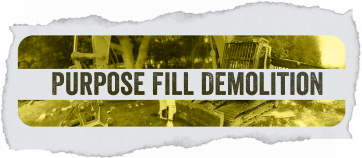
Demolition projects involve more than just destroying a building or a structure. They also generate a large volume of waste and debris that need proper management to ensure public safety, protect the environment, and comply with regulations. The demolition waste can contain hazardous materials, such as asbestos, lead, and other chemicals that pose significant health and environmental risks. Therefore, demolition waste site procedures are crucial for safely managing and disposing of debris while minimizing its impact on the environment.
In this article, we’ll discuss the Demolition Waste Site Procedures that outline the best practices for handling, recycling, and disposing of demolition waste. You’ll learn the steps involved in demolition waste management, from site preparation and sorting to transportation and disposal. Let’s dive in!
Demolition Waste Site Procedures: Step-by-Step Guide
Site Preparation and Safety Measures
Before starting the demolition process, it’s essential to prepare the site and implement safety measures to protect workers, the public, and the environment. The following steps are typically included in the site preparation phase:
- Conduct a hazardous materials survey: A thorough survey of the building and its contents is necessary to identify any hazardous materials that need special handling and disposal.
- Obtain necessary permits: Demolition permits and environmental permits must be obtained before starting the project.
- Install safety barriers: The site must be secured with safety barriers to prevent unauthorized access and to protect the public.
- Establish safety protocols: A safety plan should be developed, and all workers must be trained on safety protocols and emergency procedures.
Waste Sorting and Recycling
Sorting and recycling are critical components of demolition waste site procedures that aim to reduce waste and conserve natural resources. The following steps are involved in sorting and recycling demolition waste:
- Segregate waste streams: Demolition waste must be segregated by material type to facilitate recycling and disposal.
- Salvage reusable materials: Any materials that can be reused or repurposed must be salvaged before disposal.
- Separate hazardous materials: Hazardous materials must be separated and disposed of in accordance with regulatory requirements.
- Recycle non-hazardous materials: Non-hazardous materials, such as concrete, metal, wood, and asphalt, can be recycled and repurposed for other projects.
Transportation and Disposal
Transportation and disposal of demolition waste must comply with local and federal regulations and be performed by licensed and certified professionals. The following steps are involved in transportation and disposal:
- Use approved transportation methods: Demolition waste must be transported using approved methods, such as dump trucks or roll-off containers.
- Choose appropriate disposal methods: Disposal methods must be selected based on the type of waste, volume, and environmental impact.
- Follow regulations: Demolition waste disposal must comply with local and federal regulations, such as landfill restrictions, recycling mandates, and environmental protection laws.
FAQs
Q: What are the benefits of recycling demolition waste? A: Recycling demolition waste conserves natural resources, reduces landfill waste, saves energy, and creates job opportunities.
Q: How can I ensure that my demolition waste is properly managed? A: You can ensure proper demolition waste management by hiring licensed and certified professionals, segregating waste streams, and following local and federal regulations.
Q: Can hazardous materials in demolition waste be recycled? A: Hazardous materials, such as asbestos, cannot be recycled and must be disposed of according to regulatory requirements.


